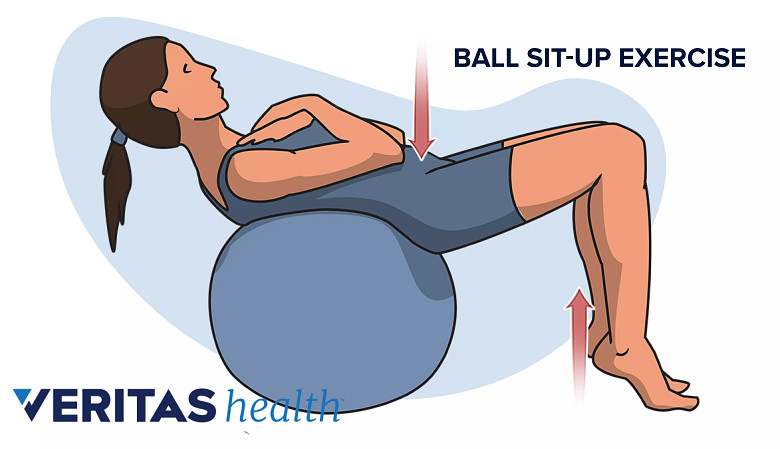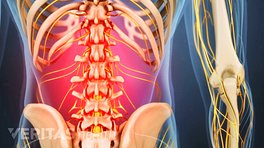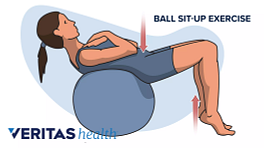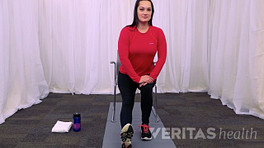To be most effective, abdominal exercises should include focus on working the following muscles:
- The abdominal muscles
- The lower abdominal muscles
- The oblique muscles (along the sides of the abdomen)
Depending on the pain and tolerance level, these exercises may be performed in a lying down, sitting, or standing position.
In This Article:
Pelvic Tilt
Pelvic tilts improve lower back flexibility and alleviate pain.
To perform this exercise, lie down with both knees bent and feet flat on the floor.
- Tighten the lower abdominal muscles, pulling the navel and lower back toward the floor, without using buttocks or leg muscles.
- Hold this position for 5 seconds.
Repeat this exercise 5-10 times.
Trunk Curl
Trunk curls strengthen abdominal muscles and support the lower back.
- To perform this exercise, lie on the floor with both knees bent and arms crossed on the chest.
- Using the upper abdominal muscles, raise the trunk of the body off the floor slightly, to about 15°.
- Hold this position for 5 seconds.
- Lower the trunk back slowly to the floor.
To be effective, the movement should raise the chest, rather than the head or neck, and only be a slight lift. Rising too far, to a sitting position, works the leg muscles instead of the abdominals.
Water Exercise/Leg Lifts
To perform this exercise, stand in a pool next to the side wall with one hand on the edge.
- Raise one leg to the front with out bending the knee.
- Lower the leg back slowly to the starting position.
Perform 5 repetitions per leg.
Also see Water Therapy Exercise Program
Exercise Ball/Sit-ups
Exercise ball sit-ups engage core muscles for improved stability and spinal support.
To perform this exercise, sit on an exercise ball with the back in a neutral position and feet flat on the floor.
- Lean back, bending at the hips and raising up on the toes.
- Hold this position for 5 seconds.
- Slowly pull back to the sitting position, using the abdominal muscles, and setting both heels back on the ground.
Aim to complete 5 to 10 repetitions of this exercise.
Exercises are best learned under the guidance of a trained therapist, who can modify the movements to treat the underlying condition and match the patient’s pain level. While exercising, if any movement or exercise causes sudden or sharp pain, the action must be stopped. If pain persists, it is advisable to consult a doctor.













